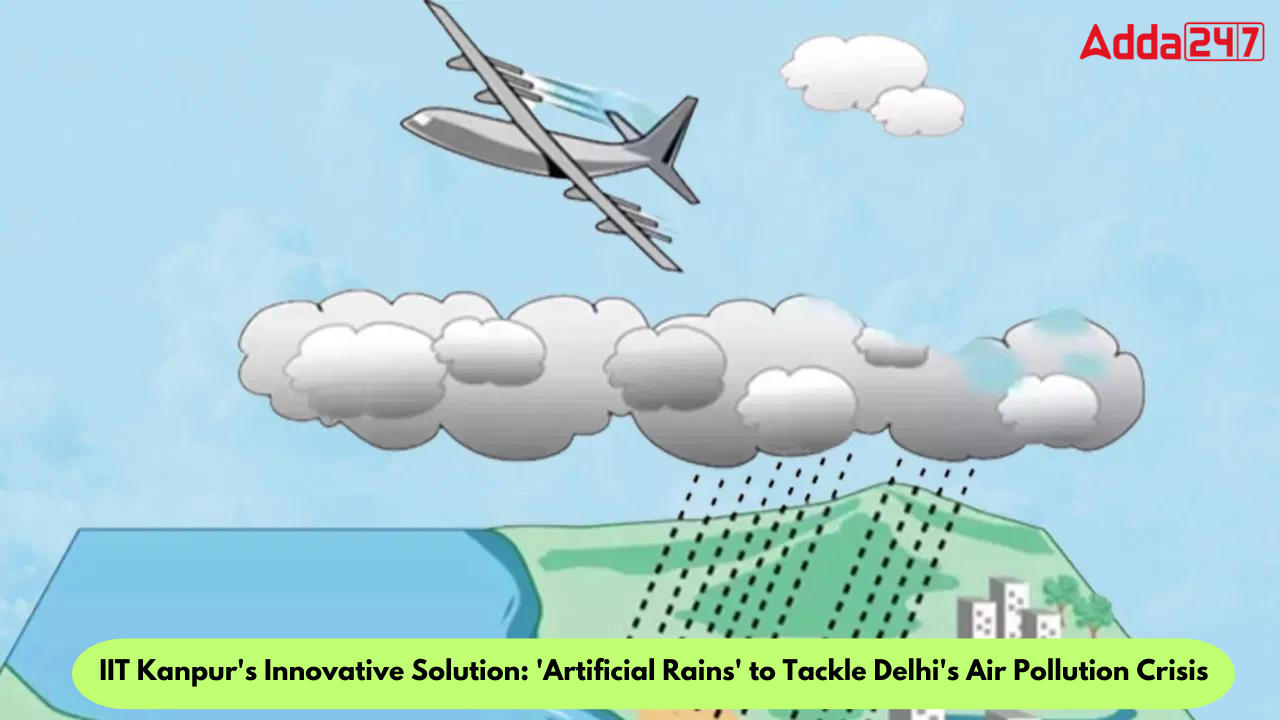Why in news?
The Indian Institute of Technology (IIT) Kanpur has a quick-fix solution to offer to Delhi and its neighbouring regions choking in toxic air – it can help the city wash down pollutants and dust with “artificial rains”
Understanding Artificial Rain
Artificial rain, also known as cloud seeding, is a weather modification technique that has been developed to induce precipitation by altering the microphysical processes within clouds. This method has gained considerable attention due to its potential to address water scarcity issues, manage droughts, and enhance agricultural productivity. Understanding the science behind artificial rain is crucial for various competitive exams, as it encompasses a wide range of concepts and applications.
Artificial rain, or cloud seeding, is a fascinating and practical weather modification technique with diverse applications. Understanding the underlying science, applications, and potential environmental concerns associated with artificial rain is crucial for exam preparation. This knowledge can be valuable in fields such as meteorology, agriculture, and environmental science, as well as for policymakers and researchers seeking to harness this technology for the betterment of society while safeguarding the environment.
The Science of Artificial Rain:
Cloud Seeding Agents:
Artificial rain involves the introduction of cloud seeding agents into clouds. These agents are typically microscopic particles that serve as nuclei for water droplets to form around. Common seeding agents include silver iodide, potassium iodide, and calcium chloride. The choice of agent depends on factors like the target cloud type and meteorological conditions.
Cloud Types:
Different clouds exhibit varying behaviors when it comes to rain production. Cloud seeding is most effective in supercooled orographic clouds, which are characterized by the presence of supercooled water droplets that are below freezing point. These clouds are common in mountainous regions.
Mechanism:
Cloud seeding works by introducing seeding agents into the supercooled cloud. As the seeding agents attract moisture and freeze, they form ice crystals. These ice crystals grow in size as they collide with other supercooled water droplets in the cloud. Eventually, these larger ice crystals become heavy enough to fall as precipitation, which can be rain or snow, depending on the temperature.
Applications of Artificial Rain:
Drought Mitigation:
Artificial rain can be used to mitigate the effects of droughts by increasing water resources, especially in regions with water scarcity issues. By inducing rainfall, it can replenish reservoirs and groundwater sources.
Agricultural Enhancement:
Farmers often use artificial rain to augment natural precipitation during critical stages of crop growth. This can improve agricultural yields and reduce the impact of dry spells.
Fire Suppression:
Artificial rain can help combat wildfires by increasing humidity and wetting the ground, making it less susceptible to ignition.
Environmental Concerns:
While artificial rain offers several benefits, it also raises environmental concerns. The introduction of seeding agents may have unintended consequences, such as water pollution or damage to ecosystems. Therefore, careful monitoring and regulation are essential to mitigate these potential issues.
Regulations and Safety Measures:
Many countries have regulations in place to oversee cloud seeding activities. This ensures that the practice is conducted safely and responsibly. Safety measures include monitoring air quality, tracking the dispersal of seeding agents, and conducting environmental impact assessments.
Several countries around the world have implemented artificial rain or cloud seeding programs to address water scarcity and other environmental challenges. Some of these countries include:
- China
- United States
- United Arab Emirates
- India
- Thailand
- Australia
- Saudi Arabia
- Russia
- Iran
- South Africa
- Malaysia
- Indonesia
- Oman
- Mexico
- Singapore
Find More Miscellaneous News Here



 UNESCO Expands World Network of Biospher...
UNESCO Expands World Network of Biospher...
 Pench Tiger Reserve Embraces AI for Enha...
Pench Tiger Reserve Embraces AI for Enha...
 Hemis Festival 2024: Celebrating Buddhis...
Hemis Festival 2024: Celebrating Buddhis...
